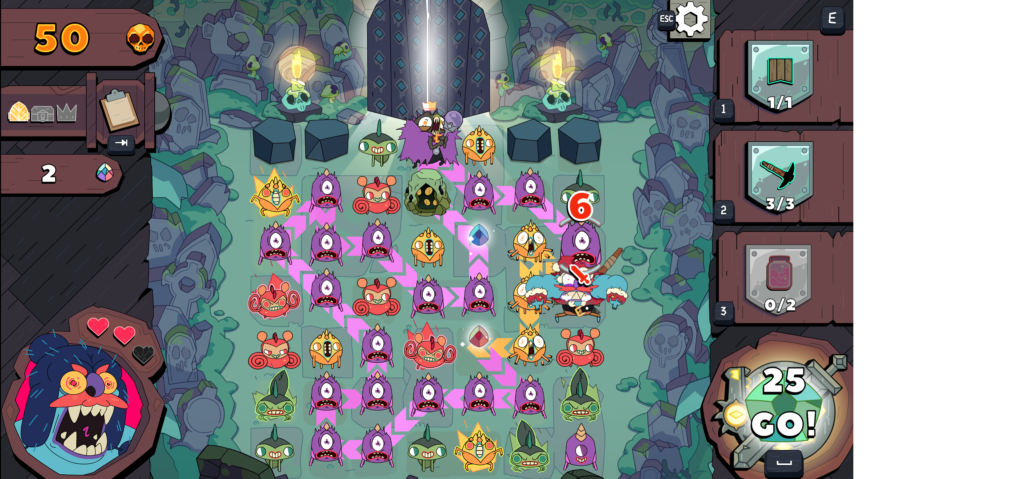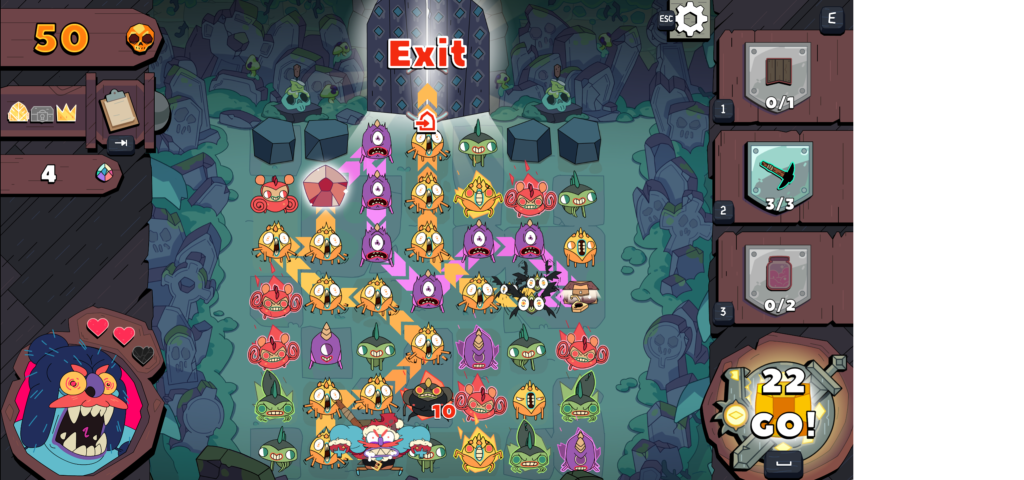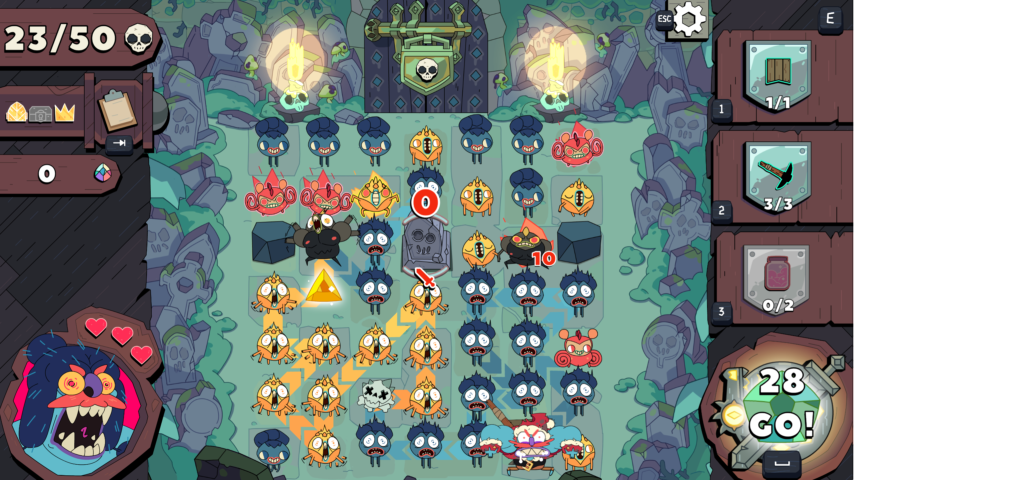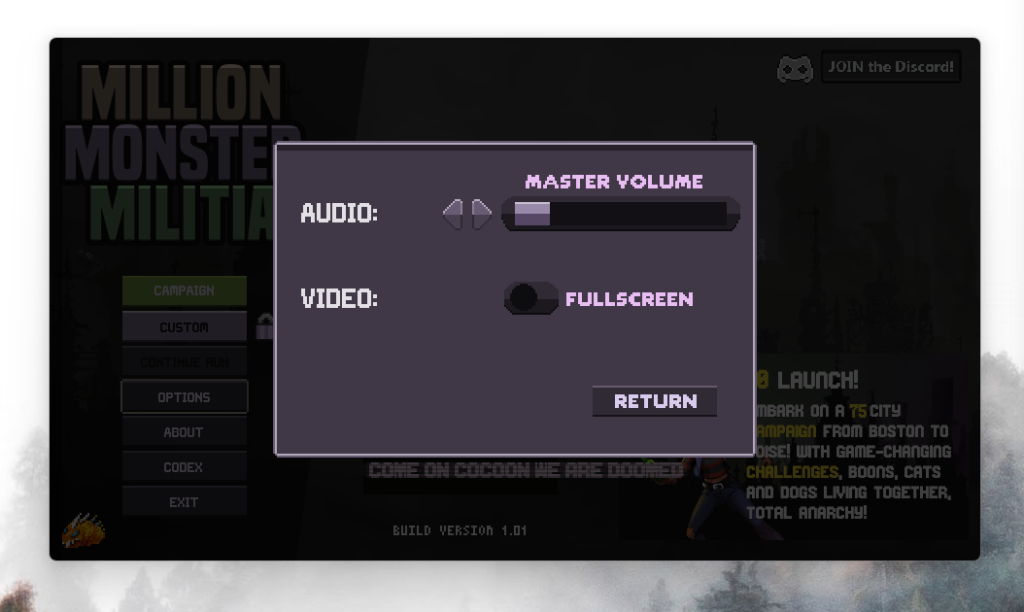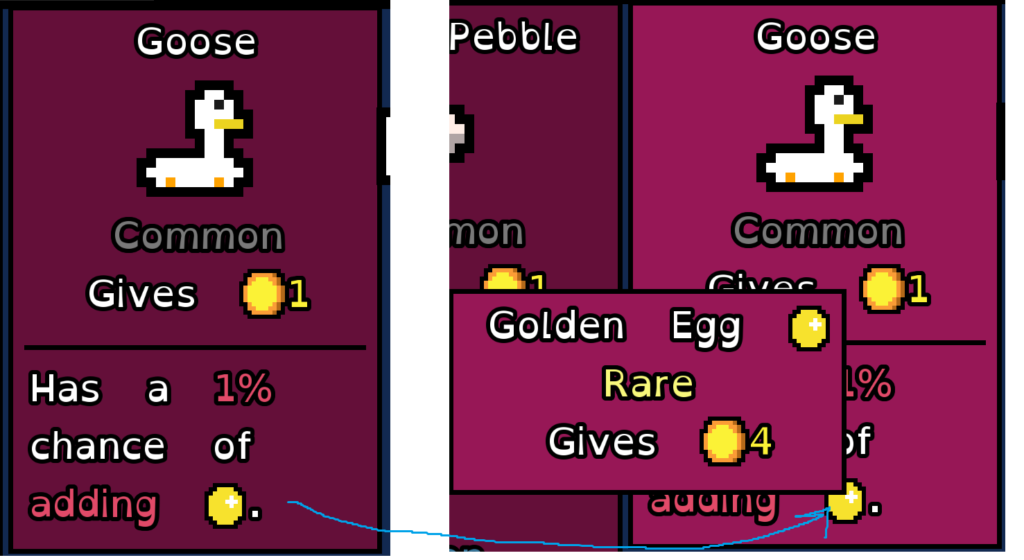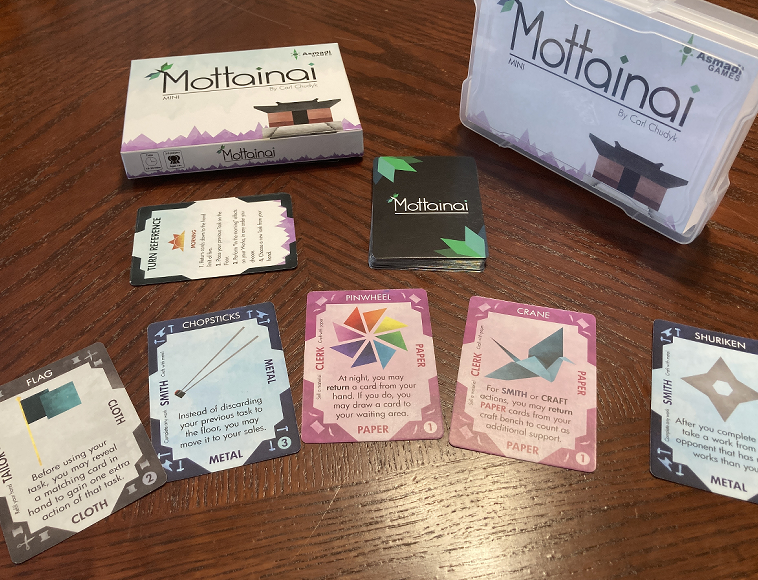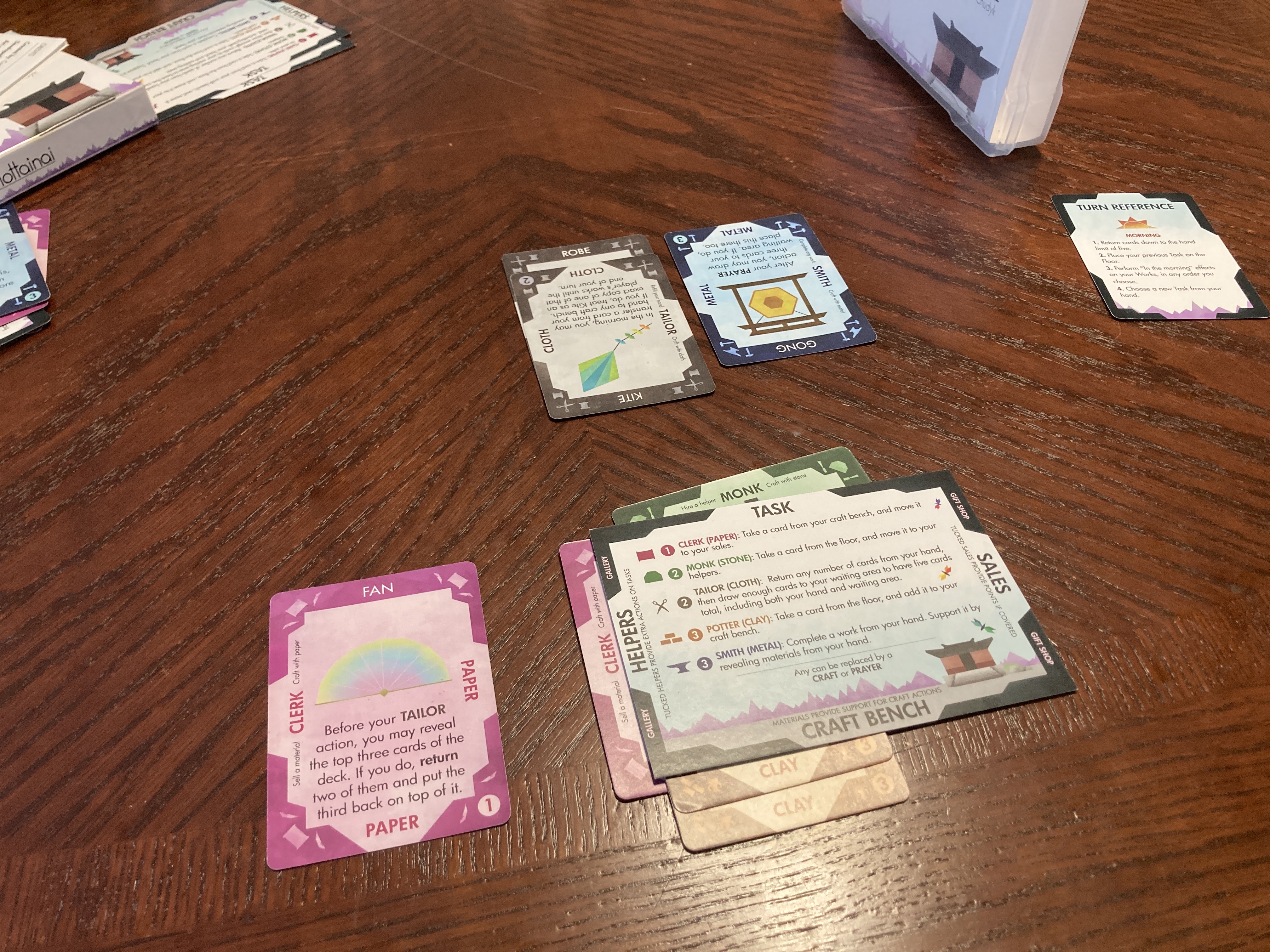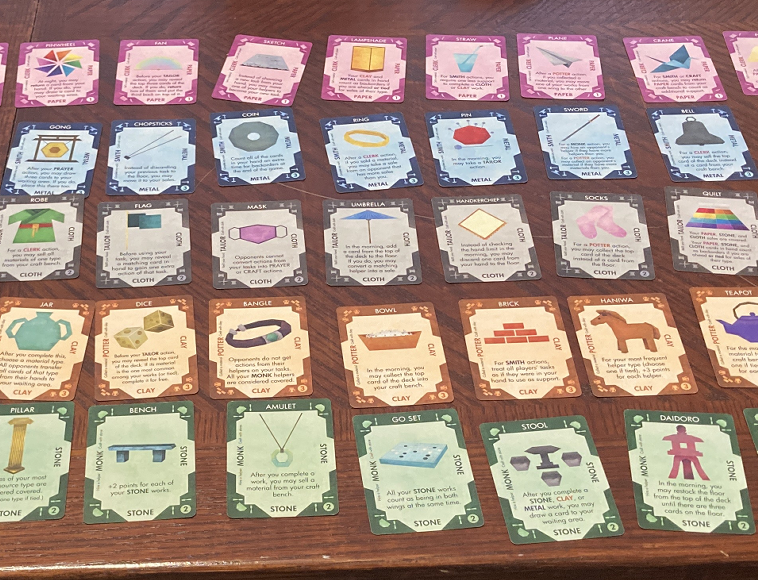It’s been a while since I really did any physical Magic tourney events. As I said two years ago:
So in conclusion: I probably wouldn’t go to another physical prerelease. Magic: Arena and Magic as a physical card game are two competing ecosystems instead of a single synergistic one, and they’re both expensive.
Me, 2022
Note: When I say “physical magic” here, I’m mostly talking about the time involved in tournaments, or any longer form/multi-round events. No issues with kitchen-table or friendly commander at an LGS.
Welp, I’m writing this, so I obviously did end up going to another one. And no, no one was covering my entry fee. That said, I was going with friends.
Also, if you enjoy these writeups, you can do me a favor by following me on Twitter.
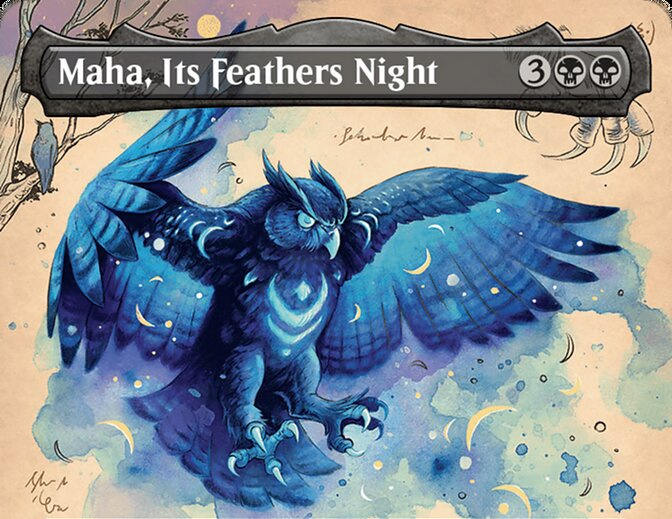
Most of my general complaints about Magic as a physical thing remain. The last event I went to was Brothers War, and it went 5 hours. This event went just about 6 1/2 hours, going to 5 rounds, though there’s a reason for that. More on that later. But enough of that. Let’s talk about the deck!
And while I don’t want to spoil anything, I will say that while I did fairly poorly, the friend I went with finished second, and I’ll be looking at their deck as well.
The Cards
It is a poor craftsman who blames his tools, and as the poor craftsman that I am, it’s time for some tool blaming.
Here are the rares.
Maha, It's Feathers Night
Wick, the Whorled Mind
Lunar Convocation
Dawn's Truce
Finneas, Ace Archer
Salvation Swan
Thornvault Forager
Clement, the WorrywartThis actually doesn’t immediately look that bad, especially with Maha being a huge bomb that almost always trades 2 for 1 on cards even if it gets hit with a removal spell.
Except I did not get a single piece of Black removal. Adding insult to injury on that account, I did not get any of the changeling artifact creatures, and I only had a single rat. So while black looked promising at first, running it meant that I would have to have my other primary color carry the entire weight of dealing with threats.
And those other colors were not doing great either.
Black - Zero hard removal.
White - 3 hard removal spells, and 4 damage blast
Green - A single Polliwallop, and a Pawpatch Formation
Blue - 3 Hand Bounce, 1 counterspell
Red - Two 6 Damage Bursts, and 1 4 damage spell. So, with my truly incredible bomb ruled out by dint of just having the worst supporting set of cards in its color ever, I found myself in a bit of a rough place. The only two cards left to me that really had the potential to be bombs were Salvation Swan, and a single copy of Shrike Force. This combined with most of my good creatures being in Green led to deciding to go Green/White with a plan of grinding the game out and pushing through with pump spells and flyers.
Here’s a link to the list on Aetherhub.
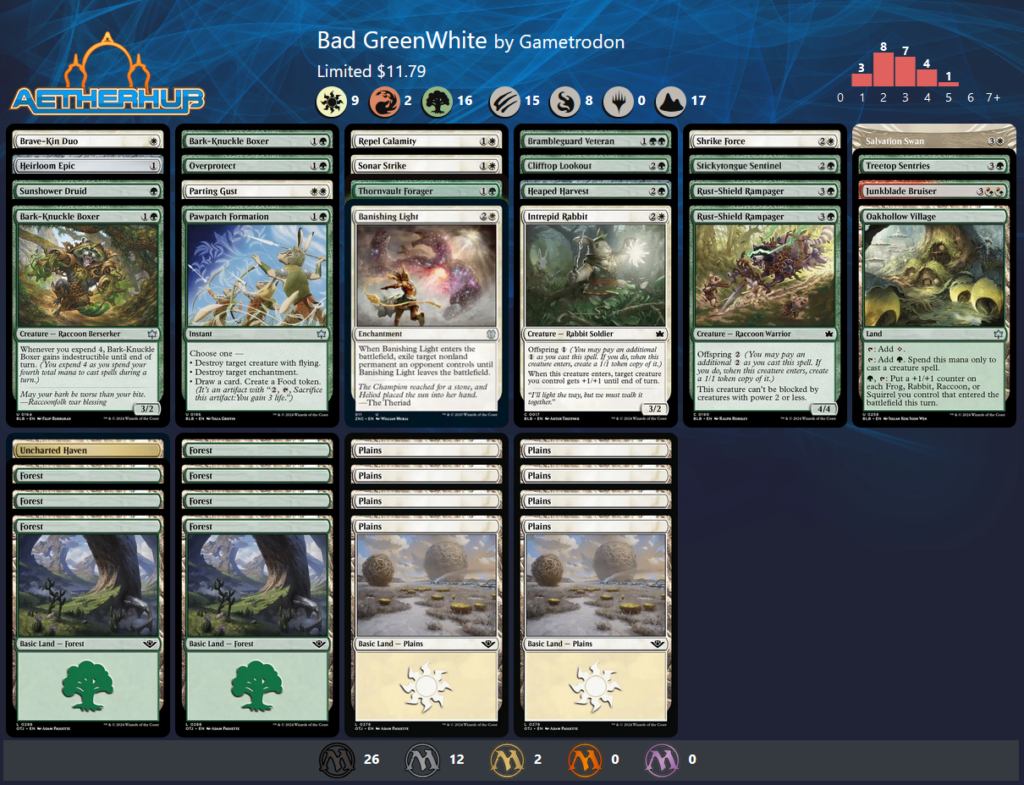
1 Sunshower Druid
1 Brave-Kin Duo
1 Heirloom Epic
2 Bark-Knuckle Boxer
1 Overprotect
1 Pawpatch Formation
1 Repel Calamity
1 Parting Gust
1 Sonar Strike
1 Intrepid Rabbit
1 Brambleguard Veteran
1 Shrike Force
1 Stickytongue Sentinel
1 Clifftop Lookout
1 Banishing Light
1 Heaped Harvest
1 Treetop Sentries
2 Rust-Shield Rampager
1 Junkblade Bruiser
1 Salvation Swan
1 Thornvault Forager
1 Uncharted Haven
1 Oakhollow Village
7 Forest
8 PlainsSo. Not the finest thing. Not a terrible curve, but a real lack of actual big threats. I had a lot of expectations heading into Bloomburrow, and most of them were wrong. But I do think I was generally correct in my assessment that the general power/toughness of a lot of the creatures is much lower (or at least starts that way).
The Games
I did pretty badly, finishing with a 2-2 match record.
Match 1 was a pretty even slog into a Black/Green deck that I ended up going 2-1 on, though game 3 was much, much closer. The turning point came when my opponent dropped Ygra, Eater of All, and I ended up blocking it with everything.
We both completely missed that he could sacrificed his creatures to pump Ygra at instant speed before damage, but the miss went in my favor, and I managed to stabilize out despite having to trade most of my board.
Match 2 was weird. It ended with me winning game 1, and drawing game 2. Game 1 I managed to sweep through very quickly with Shrike Force. Game 2 however took a much more brutal turn, and probably would have been a loss had we not gone to time.
Match 3 was against the friend I came with. He stomped me game 1, and in desperation, I swapped all my white for red in game 2 to try to stem the tide. Tide status? Not stemmed.
Match 4 went poorly on two fronts for me. Game one I mana-flooded, game 2 I got mana-screwed. Regardless, my opponent’s aggressive red/black lizard deck meant that I think they would have had the advantage either way.
So, I did badly.
My friend did not.
The Part Where My Friend Cleaned House
This was my friend’s list.
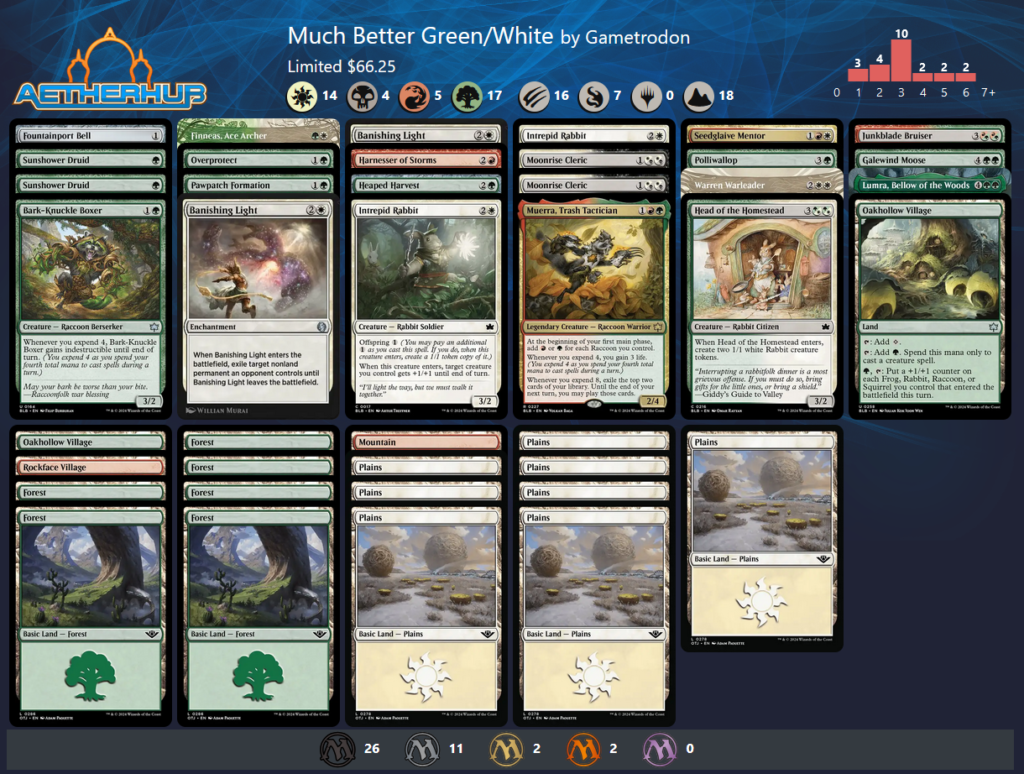
1 Lumra, Bellow of the Woods
1 Warren Warleader
1 Junkblade Bruiser
1 Muerra, Trash Tactician
1 Finneas, Ace Archer
1 Fountainport Bell
1 Heaped Harvest
2 Banishing Light
1 Polliwallop
1 Harnesser of Storms
2 Sunshower Druid
1 Seedglaive Mentor
2 Moonrise Cleric
1 Bark-Knuckle Boxer
1 Galewind Moose
1 Head of the Homestead
1 Overprotect
2 Intrepid Rabbit
6 Forest
8 Plains
1 Rockface Village
1 Mountain
2 Oakhollow Village
1 Pawpatch FormationSo, despite us both running similar colors, and many similar cards, he ended up going 4-0, going to top 2, and going 1-2 in the finals.
I think there’s a lot going on here, but having lost to him, I think it’s also very hard in limited to deal with your opponent dropping bomb after bomb, especially the Warren Warleader. Still, his choice to go into three colors and build a slightly more aggressive deck with a lot more 3 drops clearly paid off.
So. Somewhat different results between us.
Final Thoughts
One event isn’t enough to give opinions on the play-ability of a set, but it is a good chance to reflect on the general feel. I was concerned that Bloomburrow would either feel really fast due to the token creation, or very slow do the large grindy boards, and it ended up being neither.
I do think this is going to be one of friendliest sets for new and newer players that we’ve seen for a while. It has a very broad appeal with it’s woodland Redwall-esque aesthetic, and the mechanics feel pretty simple compared to Thunder Junction.
As the result of all of this, I’m really excited to see what Bloomburrow looks like as draft format, where it’ll be much easier to get a lot of the typal synergies online.
Will I be doing more physical magic?
Well, maybe in another 2 years.


